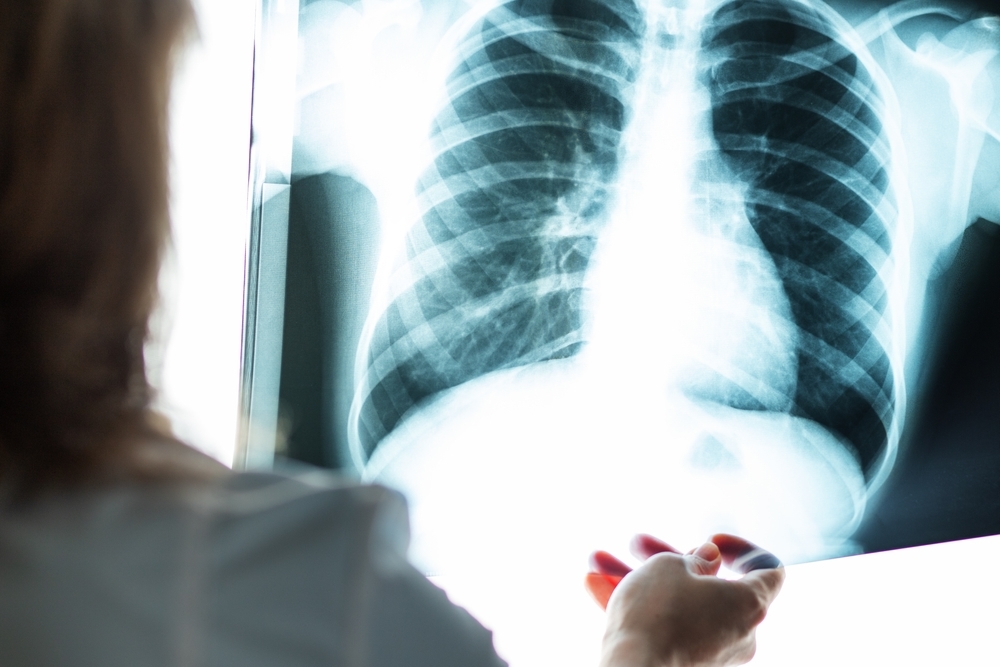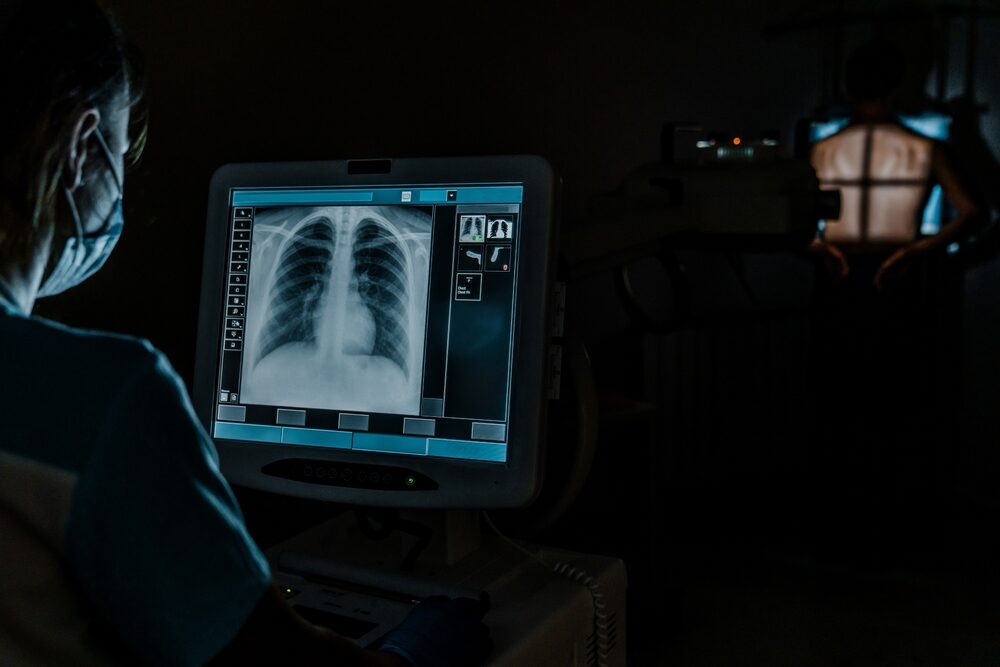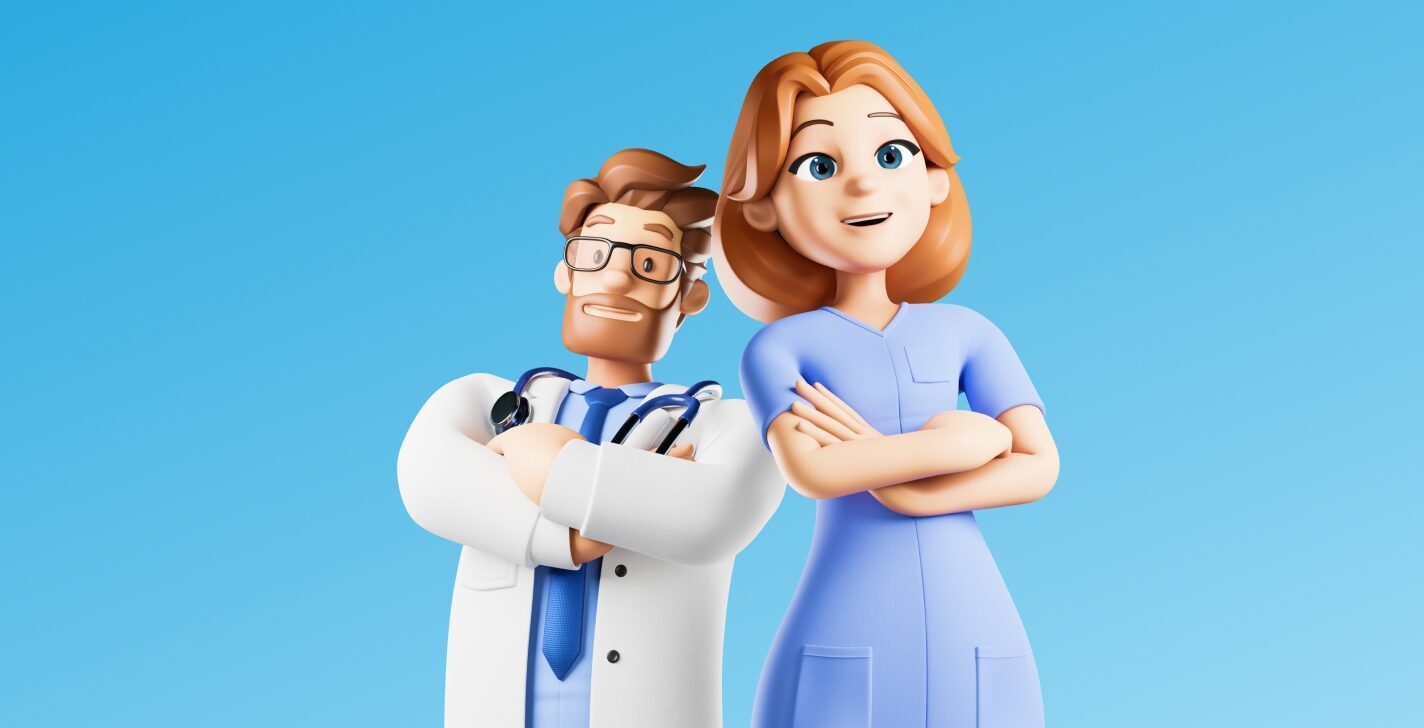
☝️ The most important facts in brief
- Thoracic surgery is a field of medicine that specialises in diseases of the lungs, the chest and the treatment of injuries and malformations in the thoracic region.
- A thoracic surgery clinic offers both minimally invasive and open surgical and treatment procedures.
- Typical diseases that thoracic surgeons deal with include lung cancer, lung metastases from other types of cancer as well as cancer and inflammation of the mediastinum, bronchi and oesophagus.
- To become a thoracic surgeon, you must first study medicine and then complete the six-year training programme to become a specialist.
📖 Table of contents
Thoracic surgery is dedicated to surgical procedures involving the chest. Specialists in this field have completed extensive training, which includes six years of further training as thoracic surgeons after completing medical school. If you decide to specialise in this area of human medicine, you will deal with a wide range of challenging procedures to treat your patients. Find out now how to become a specialist in thoracic surgery and what a career in this field can look like.
Are you interested in studying medicine?
We will be happy to advise you free of charge about your options for studying medicine, including advice on studying medicine in another EU country, which is fully recognised in Germany.
What does a specialist in thoracic surgery do?
A thoracic surgeon specialises in diseases and injuries in the area of the chest. He performs comprehensive diagnostics on the corresponding medical problems and attempts to maintain or restore the health of the lungs, chest wall and neighbouring structures.
To do this, he uses the latest surgical techniques, both for open chest surgery and minimally invasive operations. Your goal as a thoracic surgeon is always to improve the quality of life of your patients and to carry out treatments in the best possible way and according to the latest scientific findings.
Diseases that you will encounter in thoracic surgery
In thoracic surgery, you will encounter a wide range of diseases and injuries that affect the lungs, chest and neighbouring structures. The speciality covers a broad spectrum of treatment procedures, ranging from minimally invasive interventions to complex surgery. We would now like to provide you with a brief overview of some typical diseases and operations that characterise the everyday life of a thoracic surgeon.
Tumours of the lung
Lung cancer is one of the most common and most serious diseases that you will encounter in a thoracic surgery clinic. There are also lung metastases from other tumours. Whether and how surgery is performed on these tumours depends on many different factors and requires precise diagnostics. Depending on the type and stage of the tumour, the treatment of a cancer can be very different. In the case of early-stage lung cancer, the aim is often to remove the tumour completely, keep the airways clear and, in the best case, cure the patient completely.
Pneumothorax
A pneumothorax occurs when air enters the space between the lungs and the chest wall. This leads to a partial or complete collapse of the lung. Pneumothorax can occur spontaneously or be caused by injuries to the chest.
In thoracic surgery, a pneumothorax can be treated using a minimally invasive procedure in which the air is removed and the lung is re-expanded.
Emphysema
Doctors define emphysema as a permanent over-inflation of the lungs in which the small air sacs, the alveoli, are damaged. Pulmonary emphysema can be caused by various chronic lung diseases. It makes breathing increasingly difficult and significantly reduces quality of life.
Various treatment methods are used in thoracic surgery to alleviate the symptoms and reduce the speed at which emphysema progresses. With the exception of a few cases, a complete cure is not possible.
Pleural effusion
If fluid accumulates in the chest cavity between the rib cage and the lungs, this is known as a pleural effusion. In thoracic surgery, pleural effusion is often diagnosed using imaging techniques. Treatment may involve minimally invasive procedures to remove the fluid and facilitate breathing.
Modern clinics also use modern techniques such as VATS (video-assisted thoracoscopy) for drainage. Pleural effusion can be caused by infections, heart failure or lung cancer, among other things. The aim is to restore the patient's respiratory function and remove the fluid.
Pleural empyema
In thoracic surgery, pleural empyema is the term used when pus collects between the chest and lungs, often as a result of an infection. This condition leads to severe pain and breathing difficulties. Drains are used to remove the pus, making it easier for the patient to breathe. It is also important to fight the infection with suitable medication. Follow-up care for pleural empyema can sometimes be relatively lengthy, but is necessary to ensure complete healing and avoid complications.
Tracheal stenosis
Tracheal stenosis is a narrowing in the area of the windpipe that leads to breathing problems. In a thoracic surgery clinic, precise diagnostics are carried out for such diseases so that the operation, which is usually necessary, can be carried out in a well-planned manner. Minimally invasive procedures are often sufficient to widen the windpipe again and enable patients to breathe better.
Interestingly, tracheal stenosis can be caused by various factors such as injuries, chronic inflammation or tumours.

Mediastinal tumours
Tumours within the mediastinum, the space between the lungs, can be benign or malignant and require appropriate treatment depending on the type and stage of the disease.
The diagnosis is usually made using imaging procedures and an examination of the tumour during or after the operation. In most cases, the aim is to completely remove the tumour and relieve the airways and heart.
Oesophageal carcinoma
Oesophageal carcinoma, a malignant tumour of the oesophagus, requires complex diagnostics and treatment in thoracic surgery. This disease affects the area of the chest and neighbouring organs such as the lungs and heart.
Depending on how advanced the tumour is, it will be completely or partially removed during the operation. The operation may also include the area of the mediastinum and the trachea. The aim is to give patients the best possible chance of recovery or at least to improve their quality of life.
Rib fractures and other injuries
Patients with chest injuries are often a case for thoracic surgery. Accidents or falls result in bone fractures and soft tissue injuries that require treatment. Particularly if the lung tissue is affected or the pleura is damaged, treatment must be swift.
Fortunately, emergency medicine is an integral part of your training as a specialist in thoracic surgery. Accordingly, you will be able to perform a wide range of emergency operations professionally and reliably help patients with chest injuries.
Deformities of the chest wall
Depending on its severity, a deformed chest wall can be more of an aesthetic problem or cause serious discomfort. A typical example is pectus excavatum, the so-called funnel chest. The "counterpart", pectus carinatum, can also be problematic and therefore a reason for thoracic surgery.
During the operation, the regular shape of the ribcage is reconstructed. Breathing is often much easier afterwards, as the lungs are no longer constricted by the sternum.
Lung transplants
The transplantation of the lung or a lung lobe is one of the most complex procedures in thoracic surgery. A transplant can be performed if the lung has been irreparably damaged by an injury or disease.
The operation, in which the patient's lung is replaced by a donor lung, involves numerous specialists from different medical specialities. One team removes the donor's lung, while another implants it into the recipient's body.
In addition to comprehensive preparation and the actual operation, aftercare is also essential for lung transplants. The aim is to prevent a rejection reaction through lifelong immunosuppressive therapy.
Diagnostics
Imaging techniques such as X-ray, CT and MRI are key tools in thoracic surgery for examining the lungs, bronchi and thoracic wall. A precise diagnosis is crucial in order to plan the right treatment, be it a minimally invasive operation or other therapy.
Endoscopic techniques are also used to examine the pleura, the sternum and the area around the thoracic spine more closely. This allows lung cancer, lung metastases and other diseases within the chest to be recognised and treated at an early stage.

Treatment: Surgical interventions on the thorax
The speciality of thoracic surgery includes numerous surgical methods that are used to treat diseases and injuries in the chest area. These procedures include operations on the lungs, bronchi and pleura.
It is possible to perform open chest surgery, but many operations can now be performed using minimally invasive techniques. During your training as a specialist in thoracic surgery, you will familiarise yourself with a wide range of surgical methods and perform many of these operations under the guidance of experienced specialists.
Modern minimally invasive surgery
The ability to perform minimally invasive operations has revolutionised thoracic surgery. Small incisions and the use of special instruments allow complex operations in the chest to be performed gently. Procedures such as VATS lobectomy make it possible to remove lung tissue without making large incisions in the chest. These techniques reduce pain, minimise the risk of infection and significantly shorten the recovery time for patients.
Minimally invasive procedures are particularly suitable for the treatment of pulmonary hyperinflation, lung metastases and many other thoracic diseases. In a specialised clinic for thoracic surgery, such techniques are part of the standard repertoire, just as they are in vascular surgery.
Robotic surgery
Robotic surgery is one of the most modern innovations in thoracic surgery. It enables highly precise interventions in minimally invasive operations on the chest. Robot-assisted surgical systems offer more freedom of movement and are more precise than conventional methods. They can now fulfil a wide range of tasks during thoracic surgery and thus provide surgeons with optimal support.
Robotic surgery is used, for example, in operations for lung cancer or lung metastases. If, for example, lung lobes affected by cancer are removed using VATS lobectomy, greater precision can be achieved by using surgical robots.
The advantage of robotic surgery for patients is that the healing process is faster and there are fewer complications due to the extremely precise execution of the operation.
Emergency management and complications in thoracic surgery
Unfortunately, thoracic surgery can lead to numerous complications that need to be managed. As a specialist, you have to act quickly to get life-threatening conditions under control again. It is therefore a basic requirement for the profession that you are mentally and physically resilient.
But it's not just in thoracic surgery itself that emergencies arise that you have to deal with. Other specialist departments in the hospital also regularly call on thoracic surgeons for support when patients develop pneumothorax or other problems requiring urgent intervention.
Become a thoracic surgeon
If you decide to specialise in thoracic surgery and wish to become a specialist, a degree in medicine is a basic requirement. This is followed by your training as a specialist, which takes 6 years, just like the degree programme. We would now like to briefly discuss these two parts of the path to becoming a thoracic surgeon.
Medical studies
The path to becoming a thoracic surgeon begins with a medical degree. In Germany, this takes six years and comprises a two-year pre-clinical and a four-year clinical part. During this time, you do not focus on a speciality, but first learn the basics of human anatomy, which of course also includes the organs and structures of the thorax such as the heart, lungs and pleura.
You will also gain an overview of the various medical specialisms and learn the basics that you will later need to diagnose and treat various illnesses.
Further training as a specialist in thoracic surgery
Once you have completed your medical studies with the state examination, you can take up a position as an assistant doctor at a clinic. There you can then begin your further training as a specialist in thoracic surgery at the same time. This training lasts a further 6 years and includes intensive care medicine, emergency medicine, general Surgery and of course all facets of thoracic surgery.
Under the guidance of experienced doctors, you will learn how to perform the various operations within the chest cavity, make an informed diagnosis and plan the treatment of a patient. After completing your specialist training, you will be able to work as a thoracic surgeon and have the best chances of obtaining a position as a senior or head physician, for example.

Study medicine abroad with futuredoctor
Do you dream of studying medicine, but the chances of getting a place in your home country are slim? We can help you find a suitable study place abroad.
Advantages at a glance:
- EU-wide recognised qualifications
- Study in English or German
- > 95% Success rate
- > 1,000 study places allocated
From the selection of universities and support in the application process to orientation and finding accommodation - we are at your side.





